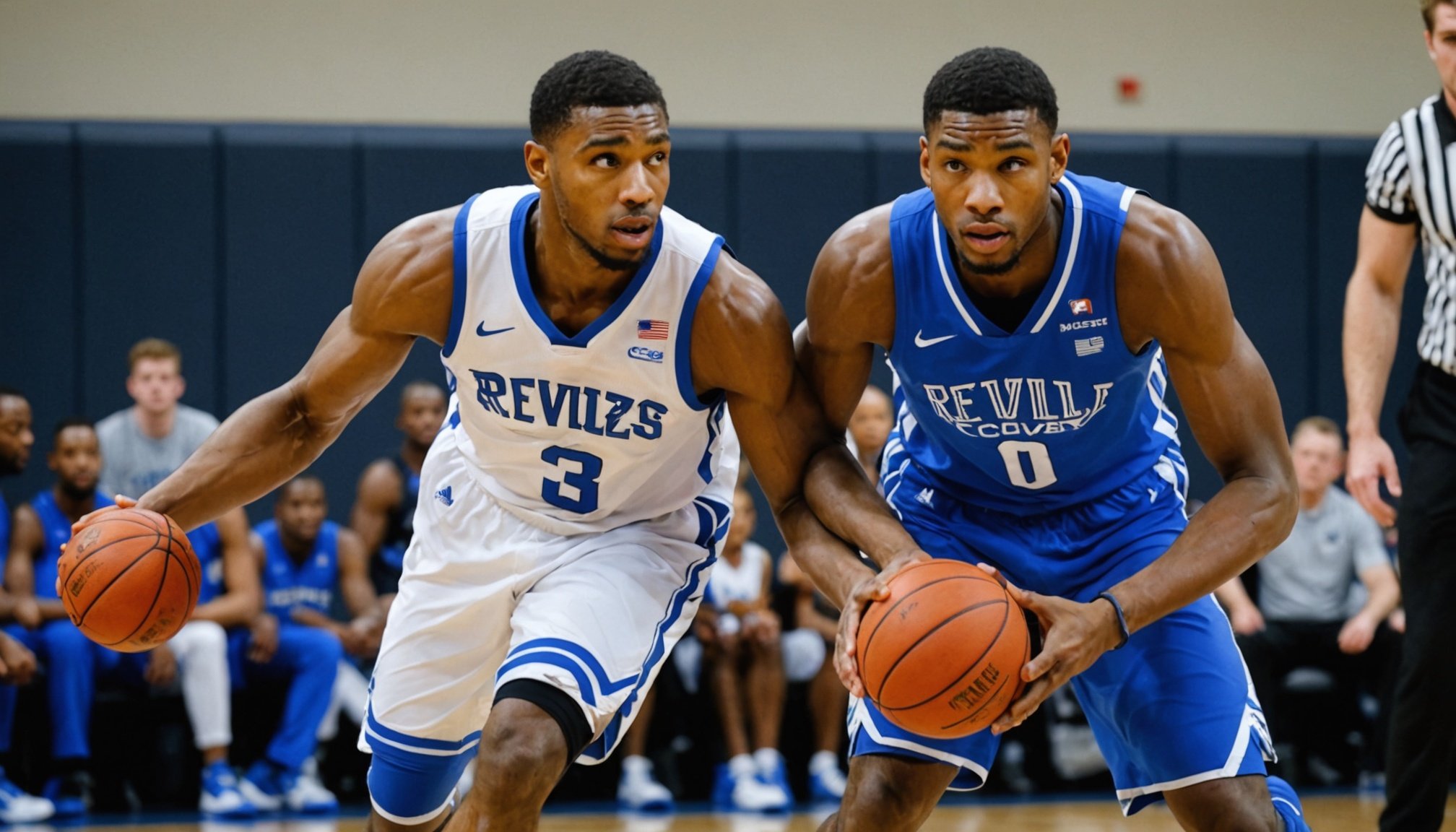Overview of Mid-Season Fatigue in Basketball Players
Mid-season fatigue is a well-recognized phenomenon impacting basketball players due to the demanding schedule and intensity of the sport. This fatigue typically arises from continuous physical exertion, insufficient recovery time, and travel exhaustion, severely affecting player health and performance.
Recognizing the symptoms early is crucial. Signs of mid-season fatigue may include prolonged muscle soreness, decreased performance, irritability, and increased susceptibility to injuries. A noticeable decline in concentration on the court can also occur, making early detection key to maintaining player well-being.
Have you seen this : Elevate your game: the ultimate resistance band training guide for uk basketball players to enhance stamina
Basketball performance is not only about skill but also the physical and mental fitness of the players. Mid-season fatigue can lead to a significant drop in game performance, as fatigued players may exhibit slower reaction times and lowered endurance. This impacts not just individual players but team dynamics and game outcomes as well.
It’s important for coaches and medical teams to observe and manage fatigue levels effectively. By addressing these issues through preventive measures and recovery strategies, such as adequate rest, nutrition, and tailored training, players can maintain their performance and overall well-being throughout the season. Identifying and supporting athletes’ recovery needs can prevent long-term health issues and optimise their game contributions.
Also read : Expert Strategies for UK Basketball Coaches to Handle In-Game Player Conflicts
Nutrition Strategies for Recovery
In the realm of sports nutrition, maintaining a balanced diet is crucial for athletes aiming to enhance recovery and performance. The foundation of an effective diet for athletes involves a well-thought-out macronutrient balance. Carbohydrates serve as the primary source for replenishing energy reserves depleted during strenuous activity. It’s important to prioritise foods such as whole grains, fruits, and vegetables to ensure a steady energy flow.
Equally essential is protein intake, which facilitates muscle repair and growth. Athletes should include lean meats, legumes, and dairy products to meet their protein needs. The strategic timing of nutrient intake is vital in maximising recovery—consuming a combination of protein and carbohydrates post-game can significantly promote muscle repair and glycogen restoration.
Hydration techniques cannot be overlooked, as proper fluid balance aids in reducing muscle cramps and fatigue. Regularly drinking water and incorporating electrolyte-rich drinks during prolonged exertion can replenish what’s lost through sweat.
Recovery foods like nuts, seeds, and omega-3-rich fish offer anti-inflammatory benefits, aiding in quicker recuperation. By integrating these nutrition strategies into their routine, athletes can optimise both their on-court performance and overall well-being, ensuring they remain at the top of their game throughout the season.
The Role of Rest and Sleep in Recovery
Achieving optimal recovery for athletes hinges on incorporating effective rest strategies and maintaining quality sleep recovery routines. Athletes require a recommended sleep duration of 7 to 9 hours per night. This aids muscle repair, rejuvenates the body, and enhances mental alertness.
To improve sleep quality, athletes can adopt good sleep hygiene practices. This includes sticking to a consistent sleep schedule, creating a comfortable sleep environment, and minimizing exposure to screens before bedtime. Such practices reinforce the body’s natural sleep-wake cycle, ensuring deeper rest.
Implementing power naps is another valuable technique for boosting recovery. Short naps ranging from 20 to 30 minutes can enhance cognitive function and reduce fatigue among players. These naps should be incorporated strategically, allowing athletes to recharge without interfering with nighttime sleep.
Additionally, rest doesn’t solely mean sleep. It encompasses days of reduced physical activity, allowing the body to recuperate fully. Active recovery, such as light stretching or yoga, can be beneficial on these rest days, helping maintain flexibility and preventing injuries. Integrating consistent rest strategies and sleep routines into an athlete’s regimen supports sustained performance and overall well-being.
Mental Wellness Techniques
Incorporating mental health practices into sports regimens is essential for athletes. Mindfulness and meditation are core techniques that foster awareness and focus, reducing anxiety and stress levels in demanding environments. Mindfulness involves maintaining a conscious presence throughout daily activities, allowing players to stay grounded and calm.
Visualization techniques are equally effective in enhancing performance and mental resilience. By mentally rehearsing successful plays or moments, athletes boost confidence and cultivate a more positive outlook toward challenges. Visualization can be a key driver in reinforcing their confidence on the court.
Building a robust support network is fundamental. Coaches, peers, and sports psychologists play pivotal roles in maintaining an athlete’s mental well-being. Continuous support fosters trust, offering a safe space to discuss mental challenges. This network often acts as a morale booster, guiding athletes through tough phases.
Additionally, stress management practices are crucial in maintaining mental balance. Techniques such as progressive muscle relaxation and controlled breathing can quickly alleviate stress, ensuring athletes remain focused and calm under pressure. Encouraging awareness of mental health not only enhances player well-being but can translate into improved basketball performance and overall well-being, creating a holistic approach to athlete care.
Physical Recovery Exercises
The integration of recovery exercises is pivotal for maintaining optimal performance and preventing injuries in basketball athletes. These exercises focus on enhancing flexibility, improving strength, and ensuring full recovery after intense physical exertion.
Stretching Routines
Incorporating stretching routines is essential for athletes. Stretching aids in improving muscle elasticity and joint range of motion, crucial for basketball players who require agility and flexibility on the court. Regular stretching helps alleviate muscle tension and reduces the risk of injuries by maintaining optimal muscle function.
Low-Impact Activities
Low-impact activities, such as swimming or cycling, play a vital role in recovery by promoting cardiovascular health while minimizing joint stress. These activities serve as effective active recovery methods, allowing players to remain physically active without the strain of high-impact exercises, thereby fostering recovery and endurance.
Strengthening Exercises
Engaging in strengthening exercises like resistance training aids in maintaining muscle mass and strength, crucial for on-court performance. This form of exercise supports muscle recovery, enhances performance, and aids in injury prevention by fortifying muscles against the demands of the sport. Such practices ensure athletes can sustain high performance across the season, integrating physical recovery exercises effectively into their training regimen.
Real-Life Examples of Recovery Techniques
Understanding recovery strategies through athlete testimonials can offer insight into practical applications. Several UK basketball players have successfully employed these techniques to enhance their performance improvement.
One example is Alex, a player facing issues with mid-season fatigue. By integrating targeted recovery exercises, such as yoga and flexibility training, Alex reported improved joint mobility and a significant reduction in muscle soreness. Her experience underscores the efficacy of incorporating training designed specifically for injury prevention and maintaining performance.
Additionally, Tom, another UK athlete, emphasised the role of nutrition strategies in his routine. By focusing on a balanced diet, rich in recovery foods like nuts and omega-3-rich fish, alongside strategic timing of nutrient intake, Tom experienced a noticeable boost in his recovery rate and game readiness.
Access to local resources can also facilitate these recovery journeys. Many athletes have benefitted from local UK support services, such as sports physiotherapists and dietitians, to tailor recovery plans suited to individual needs. Combining professional insights with personal commitment to recovery strategies can profoundly impact athlete health and endurance, fostering long-term success on and off the court.
Real-Life Examples of Recovery Techniques
Understanding recovery strategies through athlete testimonials provides valuable insights into practical applications. Several UK basketball players have effectively utilized specific techniques to enhance their performance improvement.
For instance, Alex, confronted with mid-season fatigue, integrated recovery exercises such as yoga and flexibility training into her regimen. She noticed improved joint mobility and reduced muscle soreness, demonstrating the positive impact of exercises aimed at injury prevention.
Similarly, athlete Tom highlights the significance of nutrition strategies in his routine. Concentrating on a balanced diet rich in recovery foods, such as nuts and omega-3-rich fish, along with strategic nutrient intake timing, led to noticeable improvements in his recovery rate and game preparedness.
Access to local resources plays a significant role in these recovery journeys. Many athletes benefit from UK-based support services like sports physiotherapists and dietitians, tailoring their recovery plans to individual needs. This combination of professional guidance and personal commitment profoundly influences athletes’ health and endurance, facilitating long-term success both on and off the court. Thus, learning and implementing recovery techniques from successful athletes can empower others aiming to optimise their basketball performance.











